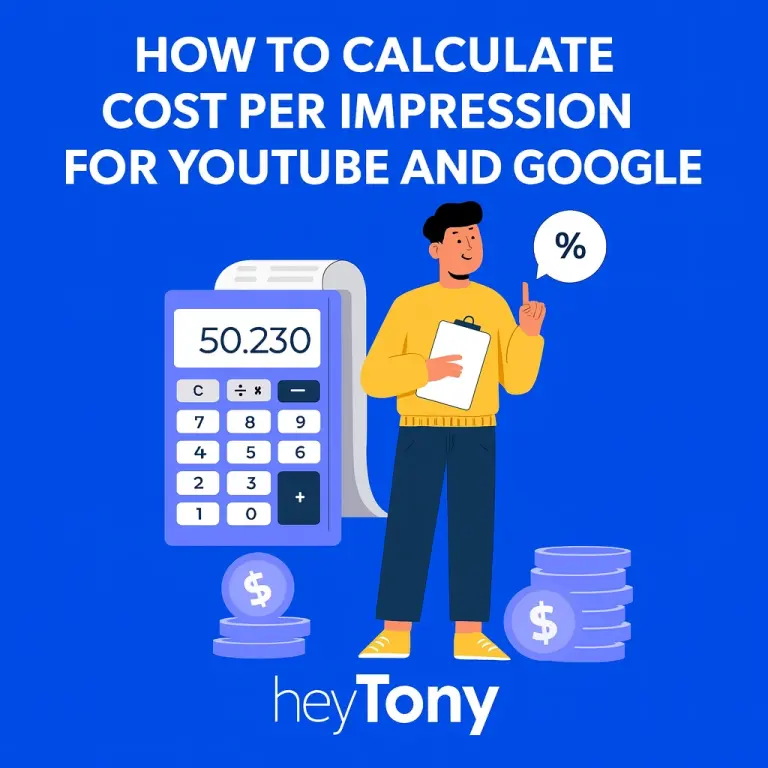![]()
Scrolling through endless pages of search results to find one helpful answer can feel exhausting. That’s why many are asking: How does Perplexity AI differ from traditional search engines? Instead of overwhelming users with ads and millions of links, Perplexity AI provides concise, conversational answers with real-time citations that feel more like speaking with a knowledgeable assistant than searching through a digital library.
In this blog, we’ll explore the key differences between AI-driven search and traditional engines like Google or Bing, highlighting where each excels and where Perplexity sets itself apart. You’ll also see how HeyTony’s SEO services can help your business stay ahead of these shifts, ensuring your content is visible whether people search through AI platforms or traditional engines.
Perplexity vs. Traditional Search Engines: How They Both Work
Both Perplexity and traditional search engines are designed to help people find information, but their functions differ significantly.
Perplexity utilizes artificial intelligence to interpret queries, gather live data, and generate conversational answers with citations. In contrast, traditional search engines, such as Google and Bing, rely on large-scale crawling, indexing, and ranking systems to return lists of links.
To better understand these distinctions, it’s helpful to look more closely at how each handles core components of the search process:
Crawling and Indexing
Perplexity does not depend on a permanent, static index of webpages. Instead, it operates dynamically by scanning the web in real-time, retrieving information from a selective set of reliable sources, and utilizing models like Retrieval-Augmented Generation (RAG) to integrate external knowledge.
Traditional search engines rely on web crawlers, often referred to as spiders, that continuously scan billions of webpages and store them in large indexes. When a user searches, results are pulled from this index based on ranking systems.
Ranking and SEO Signals
Perplexity ranks information differently than traditional engines, emphasizing context, source reliability, and citation transparency. It evaluates which sources are most relevant to a query rather than focusing heavily on managing backlinks or keyword frequency.
Traditional search engines, by contrast, rely on complex ranking algorithms that weigh multiple SEO signals, including backlinks, keyword optimization, site authority, and user engagement. This structure is what drives most search engine optimization strategies today.
But how does Perplexity’s AI-driven search differ from traditional search engines? The distinction lies in Perplexity’s focus on synthesizing information for accuracy and clarity versus traditional engines’ reliance on ranking factors to order large sets of links.
NOTE: Strong SEO practices for traditional search engines often align with the quality signals Perplexity analyzes, helping your content surface in these results too!
Query Understanding
Perplexity is designed to interpret queries in natural language, analyzing both explicit questions and implied intent. It allows users to ask follow-up questions conversationally, maintaining context across multiple queries.
Traditional search engines have evolved from simple keyword matching to more advanced semantic algorithms, such as Google’s BERT or RankBrain. While they do a better job today at interpreting user intent than in the past, they still primarily treat each query independently.
Information Retrieval
Perplexity retrieves information by actively scanning for relevant data across trusted and diverse sources at the moment of the search. It prioritizes freshness and credibility by verifying content across multiple sources before synthesizing it into a response.
Traditional search engines retrieve results from their indexed databases. These indexes are vast and include billions of pages, meaning results can cover a wide range of information. However, because the content is pre-stored, there is a risk of displaying outdated material, particularly for rapidly changing topics such as current events or market trends.
How Does Perplexity AI Differ From Traditional Search Engines?
Perplexity AI employs a distinct approach to search compared to traditional engines. Let’s see how the two models compare:
Crawling, Indexing, and Ranking vs. Conversational AI
Traditional search engines work through a system of crawling, indexing, and ranking. Crawlers scan billions of web pages, indexing the information into massive databases. When a query is entered, algorithms analyze factors such as relevance, authority, and backlinks to rank results in order of perceived usefulness.
Perplexity, on the other hand, does not rely on static indexes. Instead, it utilizes conversational AI models combined with real-time retrieval methods to gather information dynamically. Rather than ranking a list of pages, it synthesizes relevant details into a natural-language answer.
Keyword Matching vs. Intent Understanding
Traditional search engines have long focused on keywords, where the system identifies and ranks pages containing terms that match the user’s query. While semantic search improvements have enabled better recognition of meaning, many results still heavily depend on keyword density and phrasing.
Perplexity aims to interpret user intent directly. By using natural language processing, it looks beyond the literal words to understand the context of the question. The AI then generates an answer that aligns more closely with what the user meant, rather than just what they typed.
Link Lists vs. Direct Answers With Citations
Traditional search engines present results as a ranked list of links, often including snippets of text. The user decides which link to follow and must compare different sources to form a complete picture.
Perplexity condenses findings into a direct, conversational answer and includes citations for verification. Instead of manually clicking through links, users can view an immediate response while still having access to the underlying sources.
Perplexity’s Key Features That Change the Game
So, how does Perplexity AI’s technology differ from traditional search engines? Take a look at the core features that make Perplexity awesome:
Conversational, Context-Aware Responses
Perplexity transforms search into a natural conversation, remembering what you asked previously and adjusting answers based on context. This creates an experience where queries feel less transactional and more like guidance from an expert.
- Natural Flow: Queries can be written as full questions, just like speaking to a person.
- Follow-Up Friendly: Context is carried across questions, making deeper exploration seamless.
- Adaptive Replies: Answers adjust according to your phrasing and intent.
By combining these elements, Perplexity delivers a search process that feels intuitive, engaging, and user-focused—far different from the one-off results of traditional engines.
Citation Transparency: Verified Sources You Can Trust
One of Perplexity’s most valuable features is its clear and reliable use of citations. Each response is accompanied by footnotes that link directly to the original sources, enabling users to fact-check with ease.
- Source Clarity: Each statement is backed by a visible reference.
- Easy Verification: Users can click citations to explore sources directly.
- Higher Credibility: Prioritizes well-regarded, reputable outlets over popularity-driven pages.
This transparent approach ensures answers are not only informative but also trustworthy, setting Perplexity apart in an era where misinformation is widespread.
Real-Time Data Retrieval and Fresh Results
Perplexity’s ability to scan live web sources for the latest updates makes it easy for users to stay up to date with rapidly changing fields such as news, markets, and research.
- Current Content: Retrieves and summarizes the newest information available.
- Market Awareness: Helps businesses track shifting industry trends instantly.
- Reliable News: Offers fresher insights than static indexes.
With this real-time edge, Perplexity reduces the frustration of outdated results and brings users closer to the information they need right now.
Multimodal Capabilities: Text, Images, and Beyond
Perplexity isn’t limited to text-based searches; it supports image and file uploads for deeper exploration. This opens up new possibilities for research, learning, and problem-solving by giving users flexibility in how they interact with search. From analyzing diagrams to breaking down PDFs, the system adds layers to the traditional search model.
- Image Support: Understands and explains diagrams, screenshots, and photos.
- File Analysis: Processes documents for more detailed, context-driven answers.
- Broader Exploration: Enables queries that combine multiple formats for more comprehensive results.
By going beyond text, Perplexity brings search into a multimodal future, making it more adaptable to the way people learn and work today.
Real-World Scenarios Where Perplexity Excels
![]()
Perplexity isn’t just an abstract concept; it has real, practical uses that make it a valuable tool for professionals, students, and businesses. Here are some ideas for how you can use it in your life:
Academic Research
Perplexity saves researchers hours by generating clear summaries and sourcing from trusted scholarly databases. It turns complex topics into accessible insights that can be verified. Its strengths include:
- Scholarly Sources: Pulls data from research platforms like PubMed and Semantic Scholar.
- Deep Reports: Compiles multi-step searches into comprehensive reports in minutes.
- Reliable Citations: Includes direct links to original studies for fact-checking.
E-commerce Discovery
Shoppers benefit from Perplexity’s ability to simplify product searches by displaying unbiased comparisons and clear summaries. Instead of endless scrolling, it presents essential details at a glance. Key advantages include:
- Product Cards: Visual breakdowns of features, prices, and specs.
- Easy Comparisons: Side-by-side clarity without digging through reviews.
- Shopping Integration: Streamlined options for checkout and free shipping with Pro features.
Professional Reports
Businesses use Perplexity for strategy, competitor analysis, and market insights, reducing the time it takes to prepare actionable reports. Its capabilities include recognizing:
- Competitor Insights: Summarizes strengths, weaknesses, and opportunities.
- Market Trends: Monitors real-time changes across industries.
- Strategic Summaries: Produces concise, professional-grade reports.
Legal and Compliance Research
For organizations dealing with regulations and compliance, Perplexity offers a faster, clearer way to access and interpret key information. Its features include:
- Regulation Updates: Tracks the latest laws and compliance changes in real time.
- Legal Summaries: Breaks down complex documents into simple explanations.
- Trustworthy Sources: References credible legal and government domains.
What This Shift Means for Digital Marketing
AI-powered search tools like Perplexity are changing how people find and consume information online. Instead of scrolling through multiple links, users now get direct, conversational answers with citations, which alters how brands capture visibility and engagement. For digital marketers, this means rethinking strategies that go beyond keyword rankings to focus on authority, structure, and credibility.
Here’s what this shift means for your marketing efforts:
- Content Authority: High-quality, trustworthy content is more likely to be cited by AI engines.
- Structured Information: Clear formatting and organization make content easier for AI to parse and summarize.
- Shift in SEO Spend: Marketers will need to invest more in authoritative content than in paid ads alone.
- AI Visibility: Building brand presence across reputable platforms enhances the likelihood of being included in AI-generated responses.
Adapting to this new landscape means treating AI tools as both a challenge and an opportunity. Businesses that prioritize credibility, clarity, and citation-worthiness will thrive in the evolving digital marketing landscape.
How HeyTony Helps You Adapt to AI-Powered Search

At HeyTony, we help businesses stay ahead in a landscape where AI-driven platforms like Perplexity and ChatGPT are changing how people find information. We know that ranking in Google isn’t the only game anymore; brands also want to be visible in AI-powered results. By combining search engine optimization with strategies built for AI discovery, we make sure your business is prepared for both. If you’re looking for reliable SEO in Hamilton, our tailored approach ensures your content is citation-worthy, trustworthy, and positioned to thrive in both traditional and AI-powered search.
Expert SEO That’ll Help You Rank in AI Software
Our SEO expertise is built to help your brand stand out in the next era of search. We don’t just target Google rankings; we create strategies designed to make your content visible and usable by AI platforms. Here’s how we do it:
- Technical SEO: We make sure your site structure, speed, and indexing are optimized for both search engines and AI crawlers.
- High-Quality Content: We write detailed, accurate, and user-focused content that AI tools can easily summarize and cite.
- Authoritative Backlinks: We secure links from trusted, high-authority sites that strengthen both your rankings and your credibility.
By blending technical precision with engaging content and a strong backlink profile, we position your business as a source that AI tools can trust.
Conclusion: How Does Perplexity’s AI-Powered Search Differ From Traditional Search Engines?
Perplexity AI is redefining search by focusing on conversational answers, real-time updates, and transparent citations, while traditional search engines still rely heavily on crawling, indexing, and ranking algorithms. The main distinction lies in efficiency. Perplexity saves users time by synthesizing intent-based answers directly, whereas traditional platforms require users to sift through long lists of links. For businesses, the real question becomes not just “How does Perplexity AI’s approach differ from traditional search engines?” but “How do I stay visible as AI-powered search reshapes digital discovery?”
At HeyTony, we help brands adapt to this shift with SEO strategies designed to perform on both traditional search engines and AI-driven platforms. Get in touch to explore our SEO services or browse our blog for more insights on thriving in the evolving world of digital marketing.
FAQs About Perplexity vs. Traditional Search Engines
How does Perplexity’s AI technology differ from traditional search engines
Perplexity uses advanced AI to understand intent, generate conversational answers, and provide citations in real time, while conventional search engines rely on crawling, indexing, and ranking pages based on SEO signals.
Can Perplexity replace traditional search engines entirely?
Perplexity offers speed, context, and direct answers, but it cannot yet replace traditional engines, which still dominate in traffic, ecosystems, and broader functionality like maps, shopping, and email.
Is Perplexity AI always accurate?
Perplexity is highly reliable with transparent citations, but like any AI system, it can occasionally produce outdated information or errors that require users to double-check sources.
How should businesses take advantage of AI-powered search?
Businesses should create high-quality, well-structured, and citation-worthy content so AI engines like Perplexity recognize it as trustworthy, boosting visibility alongside traditional SEO strategies.
Originally published . Last updated .
Categories:
Explore More


